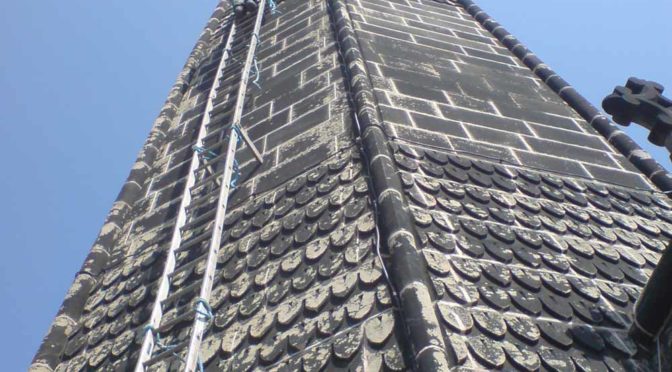The masons from St. Mary’s Cathedral Workshops were carrying out routine maintenance on the south east steeple when they noticed that there were a lot of open beds and joints on the spire above. Their scaffold reached no higher than the base of the spire, so we were called in to do the required lime pointing.
Click on images to view full size. Click a second time to close.
Our first task was to ladder the spire and carry out a photographic inspection to ascertain how much pointing was necessary.
As you can see the not all the beds and joints are wide open, but there are more than enough to make pointing necessary.
This picture was taken near the head of the spire. Once again there are some beds and joints that are open to the weather, and others that are sealed.
After discussion between us, the architect, and the masons at St. Mary’s Cathedral Worskhops, it was agreed that the best solution was to patch point the spire (only fill the joints that were open).
The only other problem we found on the spire was the existence of three old dog pins (old fashioned steeplejack access fixings). These should be removed at the end of a job, but these had been left.
They would eventually have rusted and cracked the masonry (metal expands as it rusts – it is know as rust jacking).
This one is right at the head of the spire, where it could have done significant damage.
Pointing the spire from a bosuns chair.
Here you can see the core hole left after removing the dog pin at the head of the spire.
The dog pins had already begun to rust and expand and were so tightly jammed into the masonry that the only way to remove them was to use a core drill.
The above core hole packed with lime mortar.
Looking up the spire at a completed face.
You can see that the beds and joints that were already sealed have not been pointed.
A freshly pointed area. As you can see the mortar is still wet.
Stripping the ladders off at the end of the job.










